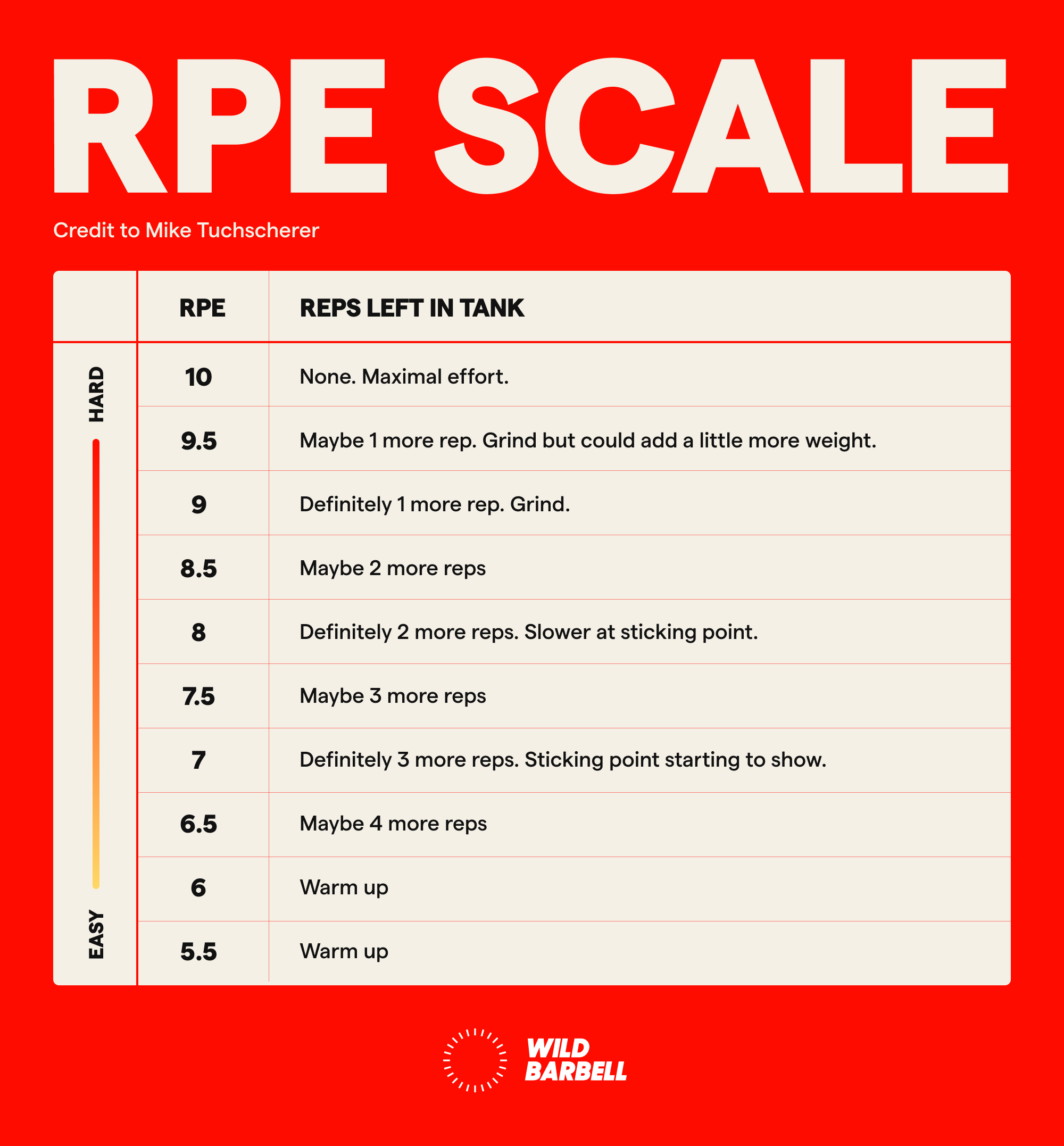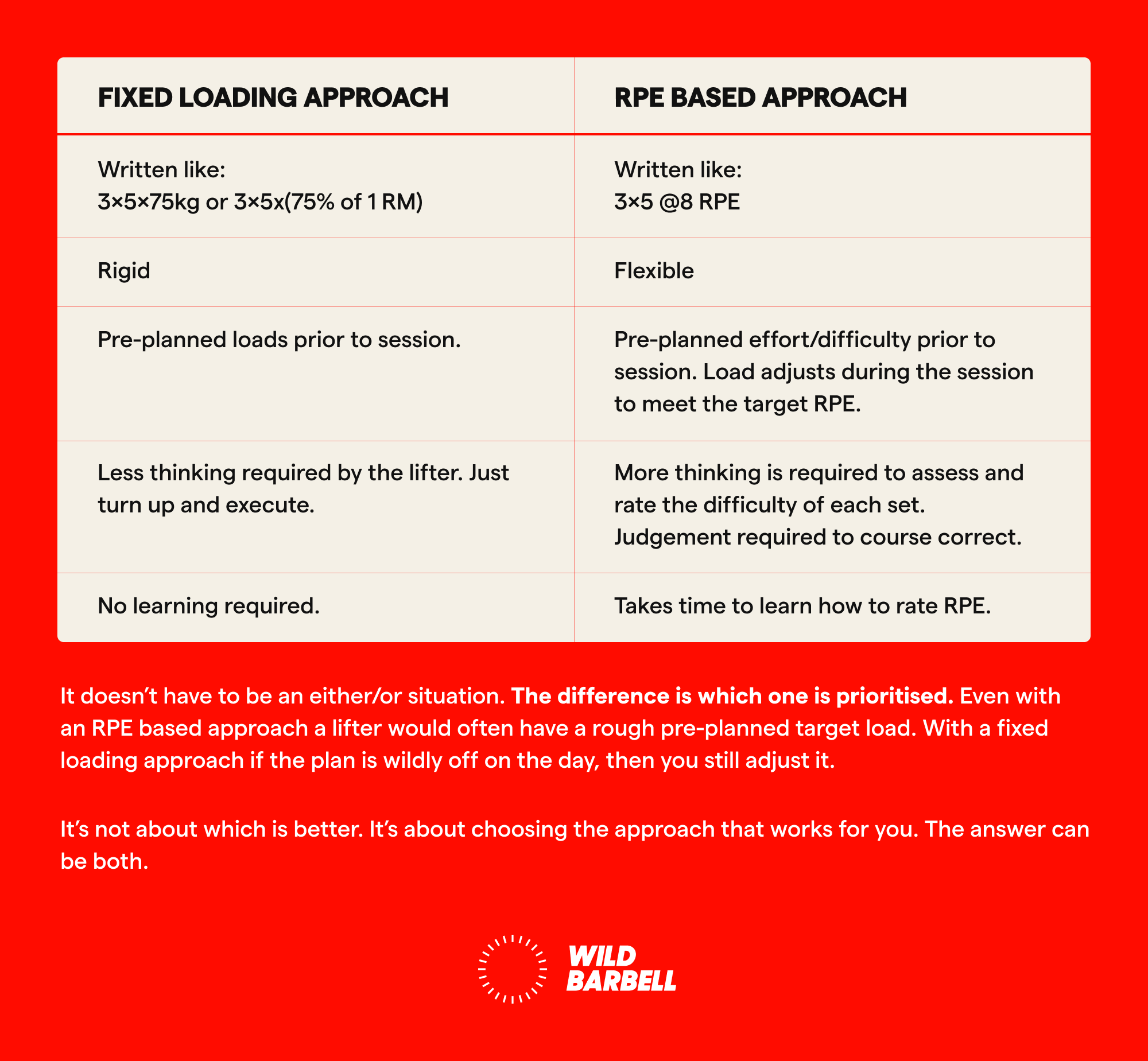Notes
RPE for strength training
Ever gone to the gym and not been able to lift the weight planned?
It’s happened to me many times. On some programs, it’s fine and expected. On others, it can be a real hit to the ego.
I’ve done 12-week strength programs based on percentages of your one repetition max. The weight on the bar is pre-planned for the entire program. I could be halfway through the program but it is far too difficult. I would be missing the lifts and feeling physically and mentally beat down. If this only happened once I wouldn’t care so much. Unfortunately, it’s happened a number times.
Another time I tried a Russian Beginner 12-week percentage-based program. I mean, why not? I distinctly remember finishing the first week and thinking it felt quite easy. Surely it will get harder as the weeks go on. Trust the process they say.
Well, I can report back that after the 12-week commitment I was weaker. That was my reward for trusting the process. The weight for the whole program was so light that I detrained myself.
I’m telling you this not to say that percentages are bad. The real question is, how do you know what load should be on the bar?
Enter RPE.
What is RPE?
RPE stands for rate of perceived exertion. It’s a measure of the difficulty of a set on a scale of 1 to 10. The higher the number the harder to set felt and likewise the lower the number the easier. RPE has been around a long time in the endurance world.
Powerlifter and coach Mike Tuchscherer modified it for strength training and popularised it. He started using it because he saw that people are unpredictable. Auto-regulated training seemed to be the solution.
Why use RPE for strength training?
RPE is a tool that you can use for all your training or parts of it. That’s up to you. Here’s why you might want to consider RPE for strength training.
1. It makes you stronger
Compared to fixed loading methods it makes you stronger.
A Systematic Review and Meta-Analysis
2. Autoregulate your effort
It adjusts to your condition right now. Not based on last year. Not off your best days. It’s easy to try to force it.
Mike states “Autoregulated training is training that adjusts to fit the needs of the athlete automatically and this turns out to be a major strength of RPE training.”
3. Avoid exercise burnout
There’s a joke among lifters that there is only RPE 10. There’s a truth in that.
Some people obsess over working as hard as possible all the time. This can lead to overtraining which causes lower motivation and performance. I bring this point up a lot. Since it’s the opposite of what most people want from exercise.
The RPE Scale

Let’s play this out. If I have 3×8 @8 RPE prescribed that means choose a load that you will complete for 10 reps but stop at 8 reps.
For one person they might be able to complete all 3 sets with the same weight and the difficulty stayed the same.
It might look like this: 8x100kg, 8x100kg, 8x100kg
For another person their performance will drop with each set. For this person to keep the difficulty at RPE 8 they will need to decrease the weight with each set.
It might look like this: 8x100kg, 8×97.5kg, 8x95kg.
Comparing Fixed Load to RPE Based approaches for strength

Learning how to gauge RPE
Try an ascending RPE pattern across multiple weeks.
Try this for your big compound lifts like squats, bench and deadlift. Combines cycling which I’ve spoken about here with RPE.
Week 1: Squat 3×5 @6 RPE
Week 2: Squat 3×5 @7 RPE
Week 3: Squat 3×5 @8 RPE
Week 4: Squat 3×5 @9 RPE
Week 5: Squat Test 5 Rep Max
Repeat
If you are not experienced with RPE, the first time around, you might guess the loads. You can use the RPE chart to help choose the loads on the bar. The second time around, it will be much more accurate.
Try ARMAPs
The only way to know how far from failure you are is to fail. Here is how AMRAP sets (As many reps as possible) can help.
For a few weeks try doing an exercise for 2×5@7 then one last set to failure. So on the first two set, you are practicing putting a load on the bar that results in an RPE 7. Then on the last set if you have gauged the weight correctly you would get a set of 7 or 8 reps. If you get more reps than that it means the load for the first 2 sets was too light.
Record yourself lifting
While doing your ascending weeks. Record your sets and take notice of how it feels.
- Is the bar speed slowing down?
- Is your sticking point starting to show?
- Am I starting to pause between reps?
Now you have two data points. How it feels and how it looks.
That’s it. A little introduction to effort-based strength training and RPE. Happy lifting.
Collection of programs
Find a lifting program that meets your lifestyle